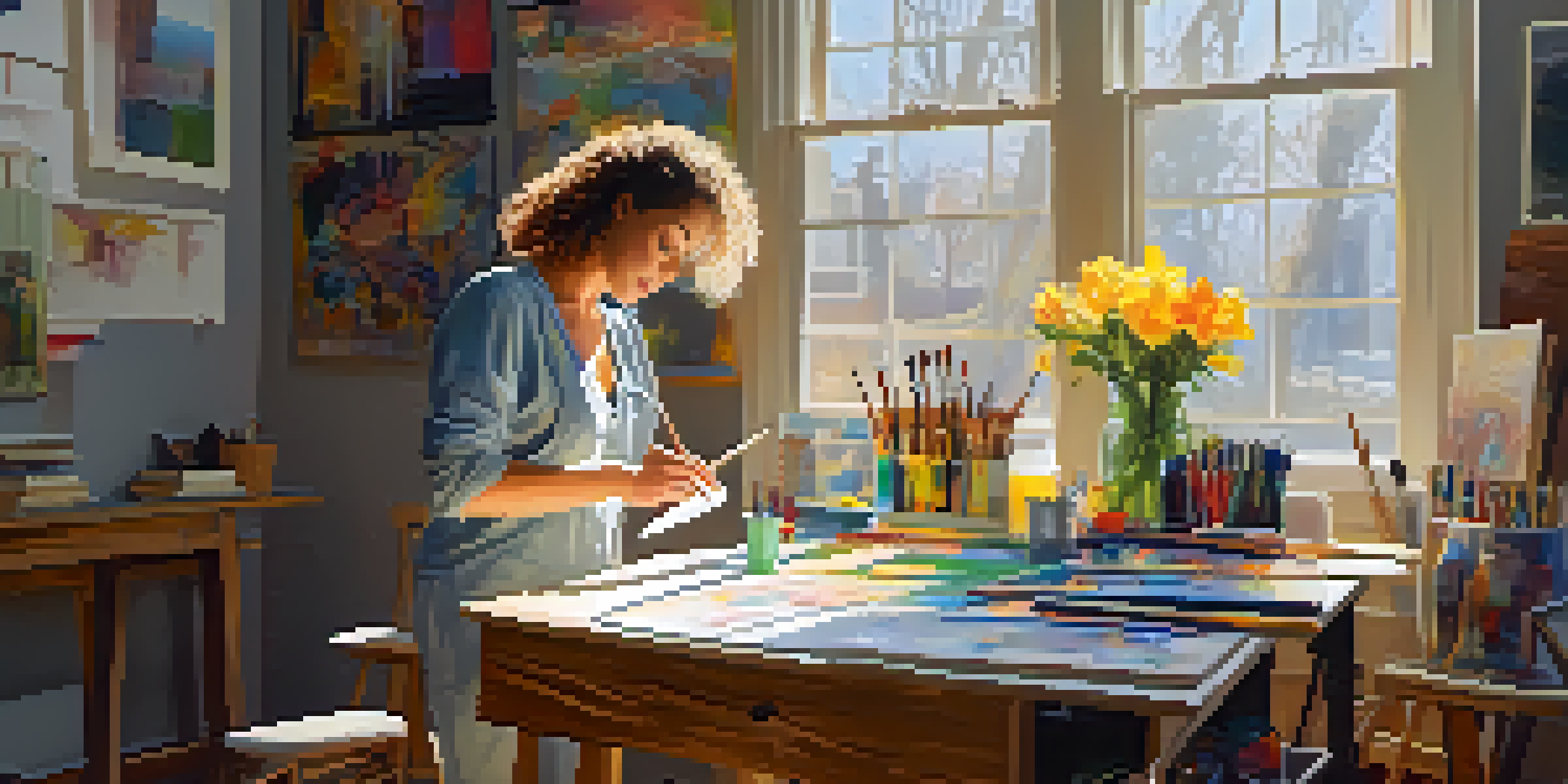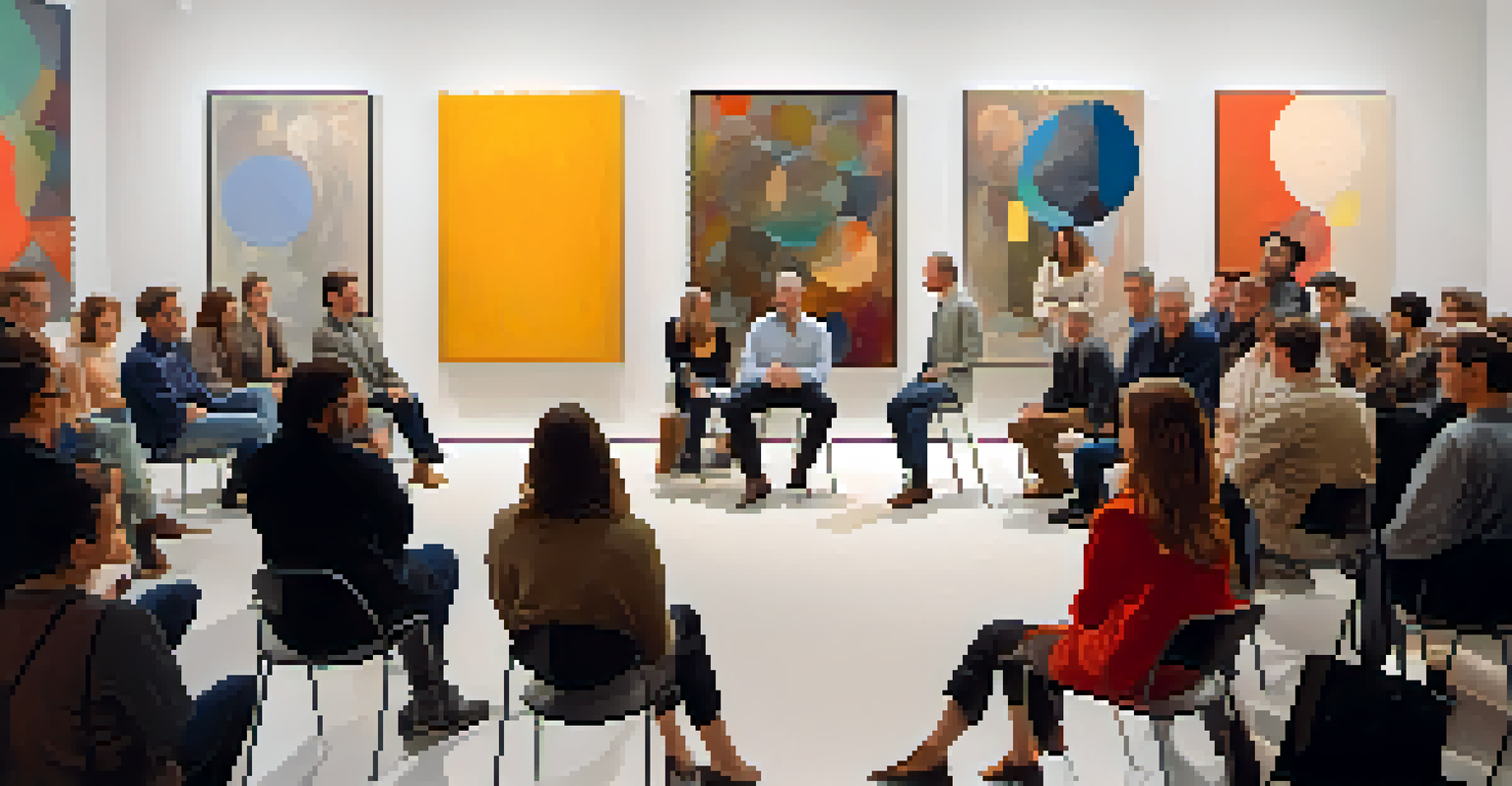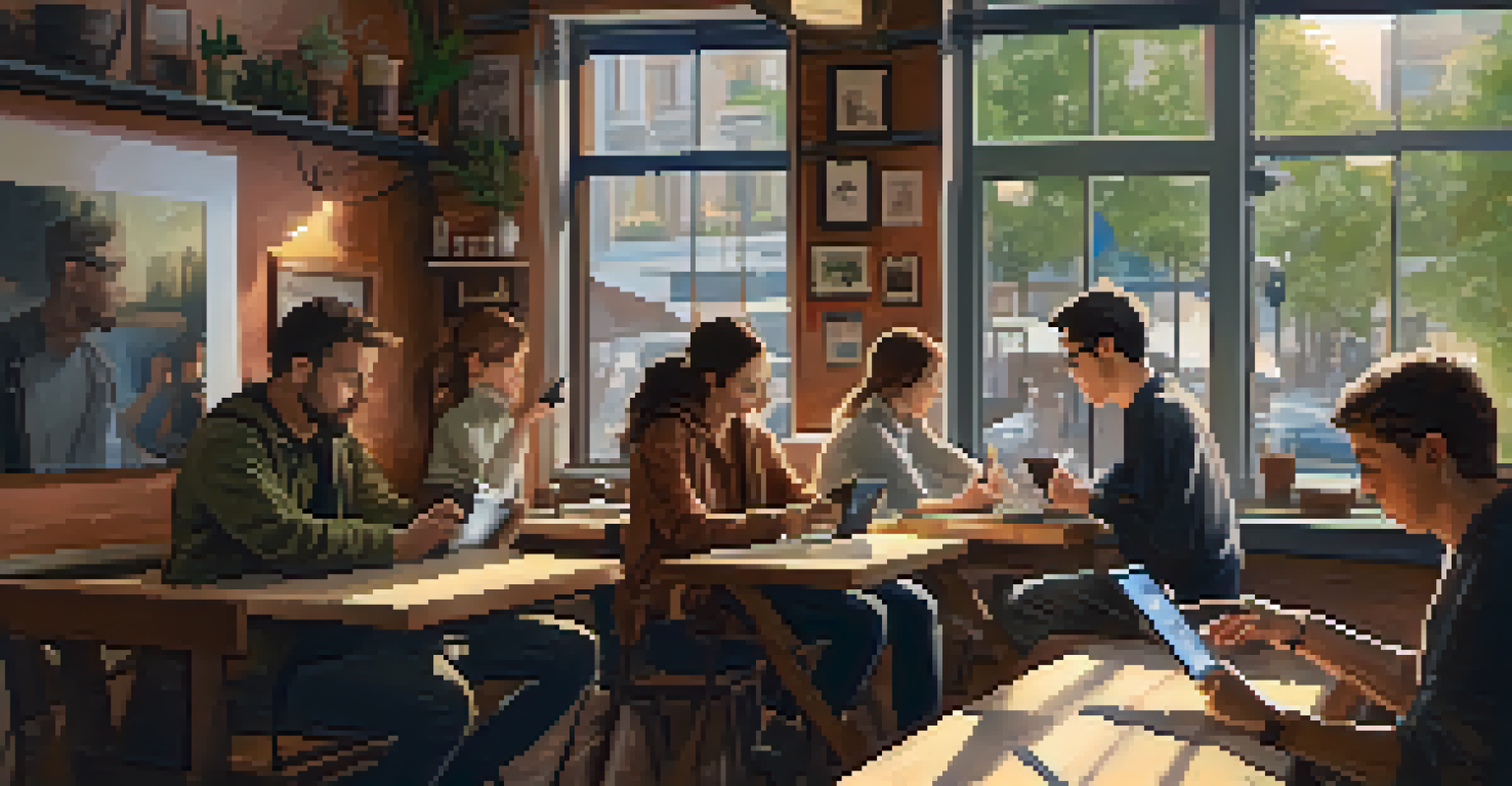The Role of Critique in Shaping Artistic Movements in Painting

Understanding the Role of Critique in Art
Critique in art serves as a mirror, reflecting the strengths and weaknesses of a piece. It plays a crucial role in guiding artists by offering feedback that can spark new ideas or refine existing ones. Just like a coach helps an athlete improve, critics help artists hone their craft and vision.
Every artist dips his brush in his own soul, and paints his own nature into his pictures.
Moreover, critique fosters dialogue within the art community, encouraging artists to engage with each other and their audiences. This exchange of ideas can lead to collaborations and innovative approaches that redefine artistic boundaries. When artists listen to critiques, they open themselves to growth and exploration.
Ultimately, critique is not about tearing down an artist's work; rather, it is about building a foundation for improvement and evolution. It empowers artists to take risks and experiment, knowing they have a safety net of constructive feedback. This dynamic is essential for the development of new artistic movements.
Historical Context: Critique and Art Movements
Throughout history, critique has been pivotal in the emergence of significant art movements. For instance, the Impressionists faced harsh criticism for their unconventional techniques and subject matter. However, this very critique fueled their determination to redefine the standards of painting, leading to a revolution in how art was perceived.

Similarly, the Dada movement arose as a response to the critiques of traditional art forms during World War I. Artists deliberately challenged societal norms and artistic conventions, using critique as a means to provoke thought and inspire change. This movement highlighted the power of critique not just as a feedback mechanism, but as a catalyst for artistic rebellion.
Critique Fuels Artistic Growth
Critique serves as a vital tool for artists, providing constructive feedback that encourages exploration and innovation.
As we look at these examples, it's clear that critique has often been the spark that ignites new movements. It pushes artists to reflect on their intentions and the cultural context surrounding their work, thereby shaping the trajectory of art history.
The Influence of Critics on Artistic Direction
Critics do more than just provide feedback; they often help set the artistic agenda. Their reviews can elevate an artist's profile, drawing public attention and influencing market demand. For instance, a glowing review from a prominent critic can transform an unknown artist into a household name overnight.
Critique is the soul of art; without it, we stagnate in our creativity and our understanding.
Moreover, critics can shape public perception of entire movements. Their interpretations and evaluations can lead to a broader understanding and appreciation of an artist's work, as seen with the Abstract Expressionists in the mid-20th century. Critics played a vital role in framing the narrative around this movement, helping it gain acceptance and recognition.
In this way, critics become gatekeepers of artistic value, guiding audiences on what to appreciate and how to interpret art. This relationship between critics and artists is complex but essential for the evolution of artistic expression.
The Impact of Social Media on Art Critique
In today's digital age, social media has transformed the landscape of art critique. Artists can share their work instantly, receiving immediate feedback from a global audience. This democratization of critique allows for a diverse range of perspectives that can enrich the artistic process.
However, this shift also brings challenges. The speed of social media can lead to superficial critiques that lack depth and constructive analysis. Artists may find themselves navigating a sea of opinions, which can be overwhelming and sometimes detrimental to their creative process.
Historical Impact on Art Movements
Throughout history, critique has played a crucial role in shaping significant art movements, pushing artists to challenge norms and redefine standards.
Despite these challenges, social media remains a powerful tool for artists to engage with their audience and peers. It fosters a sense of community and collaboration, proving that critique can thrive in various formats, adapting to the changing times.
Constructive Critique: A Double-Edged Sword
While critique can provide invaluable insights, it can also be a double-edged sword. Constructive feedback can boost an artist's confidence and inspire growth, while harsh criticism can lead to self-doubt and stagnation. This highlights the importance of how critique is delivered and received.
Artists often need to develop a thick skin to navigate the waters of critique. Understanding that not all feedback is personal can help them focus on the constructive elements that truly matter. By filtering out noise and embracing valuable insights, artists can continue to evolve and refine their craft.
Moreover, the relationship between artists and critics should be symbiotic. Artists should seek out mentors who provide guidance while critics should strive to offer feedback that encourages rather than discourages. This collaboration can foster a thriving artistic environment.
The Role of Audience in Artistic Critique
The audience's perspective is an often-overlooked aspect of critique in art. Viewers bring their own experiences and interpretations, which can significantly impact how a piece is received. This interaction between the artwork and its audience creates a dynamic dialogue that can influence an artist's future works.
Engaging with audiences through critiques allows artists to understand the broader cultural context of their work. Feedback from viewers can reveal what resonates and what falls flat, guiding artists in their creative journeys. This process of engagement is crucial for artists looking to connect with their audience on a deeper level.
Social Media Transforms Feedback
The rise of social media has democratized art critique, enabling instant feedback from a global audience while also presenting challenges in depth and quality.
Ultimately, the audience's role in critique highlights the collaborative nature of art. It is not just about the artist and the critic; it is also about the viewers who bring their unique perspectives to the conversation. This triad of interaction enriches the artistic landscape, fostering a more inclusive environment.
Looking Ahead: The Future of Critique in Art
As the art world continues to evolve, so too will the role of critique. Emerging technologies and new platforms for sharing art will redefine how artists receive feedback. Virtual reality, augmented reality, and artificial intelligence may soon play a role in the critique process, offering new ways to experience and evaluate art.
Moreover, the growing emphasis on inclusivity and diversity in the art world will likely influence critique as well. Voices that were historically marginalized are gaining prominence, leading to a broader understanding of artistic value. This shift can help create a more equitable space for dialogue and critique.

Looking ahead, it's clear that critique will remain an essential component of artistic development. Whether through traditional reviews or modern social media interactions, the conversations sparked by critique will continue to shape the future of art.